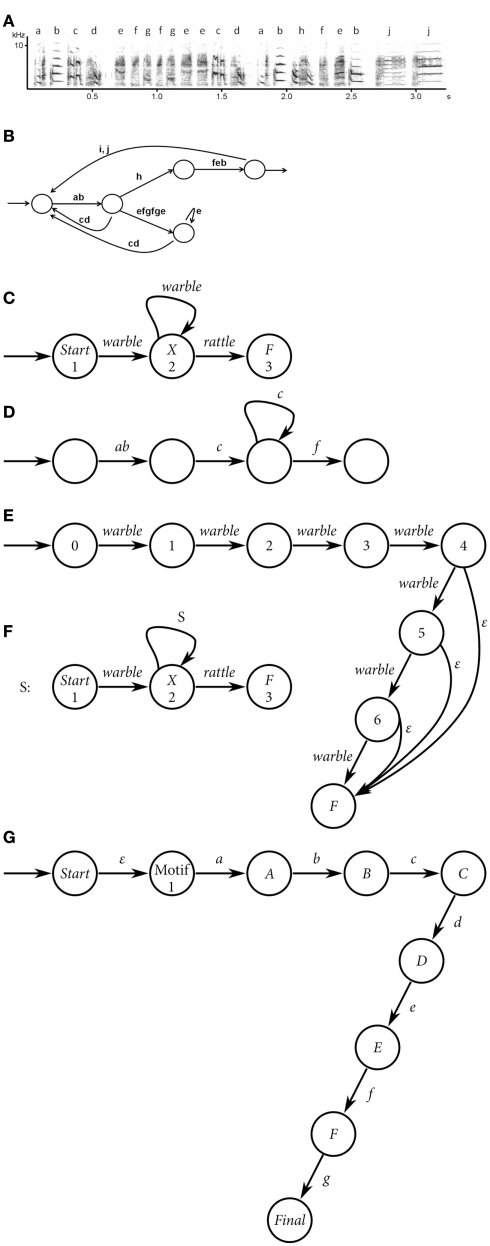Figure 3.
(A) Sonogram of an adult male Bengalese finch. X-axis is in seconds, Y-axis in kilohertz. Song syllables are demarcated by alphabet letters. (B) Finite-state transition network corresponding to the song syllable sequence in (A). The network begins at the extreme left. Open circles correspond to states in the network, with transitions on arcs labeled with the syllables corresponding to those identified from the sonogram in (A). Note that loops in the network can go back to previous states. (C) A finite-state transition network that generates syllable sequences containing at least one or more warbles, ending with a rattle. (D) A finite-state transition network encoding an “unbounded” dependency, in the sense that a syllable sequence beginning with ab must always end with exactly a single f. Note that syllable sequences may be arbitrarily long, due to the loop labeled with a c from one state back to itself. Thus, even though the ab and f may be arbitrarily far apart, a finite-state network can still determine whether this constraint holds. (E) A finite-state transition network that “counts” any number of warbles between four through seven, inclusively. The transitions labeled with ε denote so-called “epsilon transitions” where an output syllable is not produced when moving between states. (F) A recursive transition network labeled S that uses S itself on the transition looping from state 2 back to state 2 as a subroutine to generate an indefinitely large number of properly nested warble-rattle pairs. States are numbered for convenience. (G) A finite-state transition network that describes a hypothetical zebra finch song motif, as represented by a sequence of seven syllables, a through g. Note that if there are no nested dependencies, then the state Motif could be reached from any other state as part of a larger network describing the overall song.

